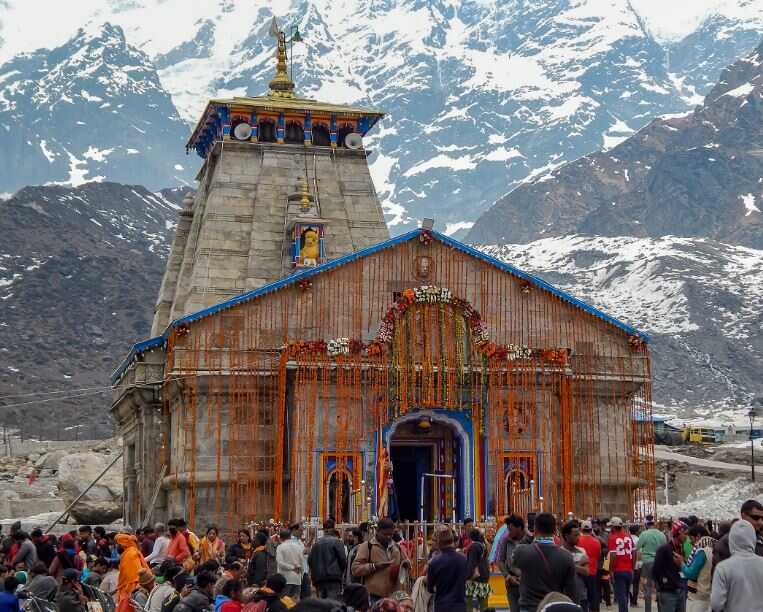

Kedarnath Dham is one of the most revered and sacred pilgrimage destinations in India, nestled in the Garhwal Himalayas of Uttarakhand. Dedicated to Lord Shiva, the Kedarnath Temple holds immense significance as it is one of the 12 Jyotirlingas and the most prominent among the Panch Kedar temples. Situated at an altitude of 3,583 meters (11,755 feet) near the Mandakini River, Kedarnath is a spiritual haven surrounded by snow-capped peaks and mesmerizing natural beauty.
The history of Kedarnath Dham is intertwined with legends and mythology. According to one story, after the Kurukshetra war, the Pandavas sought Lord Shiva’s forgiveness for their sins. Lord Shiva, wanting to avoid them, disguised himself as a bull and hid in the Kedarnath region. When the Pandavas discovered him, he dived into the ground, leaving his hump on the surface. This hump is now worshipped at the Kedarnath Temple, while other body parts appeared in nearby locations, forming the Panch Kedar.
The temple is believed to have been originally constructed by the Pandavas and later renovated by Adi Shankaracharya in the 8th century, who established it as a key pilgrimage site.
Kedarnath Temple is located in the Rudraprayag district of Uttarakhand and is surrounded by the mighty Kedarnath Mountain and other Himalayan ranges. The temple stands near the origin of the Mandakini River, which adds to the serene and spiritual ambiance of the location.
The Kedarnath Temple is a marvel of ancient stone architecture. Built from massive grey stone slabs, it stands strong amidst the harsh Himalayan weather. The sanctum houses a conical-shaped lingam, which represents Lord Shiva. Intricate carvings and statues of deities adorn the temple walls, showcasing its spiritual and artistic grandeur.
Kedarnath is one of the 12 Jyotirlingas, the holiest shrines of Lord Shiva. Devotees believe that visiting this temple washes away all sins and brings spiritual liberation.
As the most important temple among the Panch Kedar, Kedarnath holds a unique place in Hinduism. It is an integral part of the spiritual journey undertaken by Shiva devotees.
Kedarnath is one of the four shrines in the Char Dham Yatra, making it an essential pilgrimage for Hindus seeking moksha (salvation).
The nearest airport is Jolly Grant Airport in Dehradun, about 239 km away. From there, travelers can take a taxi or bus to Gaurikund, the base for the Kedarnath trek.
The closest railway station is Rishikesh, approximately 221 km from Gaurikund. Regular bus and taxi services connect Rishikesh to Gaurikund.
Gaurikund, the starting point of the Kedarnath trek, is well-connected by road to major cities like Haridwar, Rishikesh, and Dehradun.
From Gaurikund, visitors can trek 20 km to reach Kedarnath or opt for helicopter services available from Phata, Guptkashi, or other locations.
The temple is open from late April or early May to October or November, depending on weather conditions. The ideal time to visit is from May to June and September to October, as the weather is pleasant and suitable for travel.
Located close to Kedarnath, this temple is dedicated to Bhairav, the protector deity of the Kedarnath Temple.
A small, crystal-clear lake located 3 km from Kedarnath, ideal for a serene trek.
A high-altitude glacial lake located 8 km from Kedarnath, surrounded by snow-covered mountains.
The base point for the trek, Gaurikund, is known for its hot water springs and a temple dedicated to Goddess Parvati.
The temple opens with the morning Maha Abhishek and closes with the evening Shringar. Devotees can participate in these rituals to seek blessings.